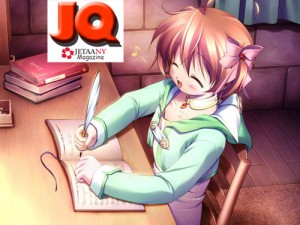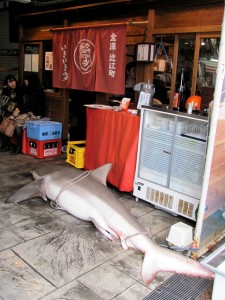JQ Magazine Seeks Writers for Spring 2013!
As we slide into spring, JETAA New York’s JQ magazine continues to provide content with an ever-expanding array of articles, interviews and features (see our recent stories here). We’re now looking for new writers, including recent returnees and JET vets, from all JETAA chapters worldwide for posting stories via our host at the global JET alumni resource site JETwit.com. (Scribes are also encouraged to join the JET Alumni Writers group on LinkedIn.)
Below are story ideas grouped by JET participants and alumni (JET World) and those more on Japanese culture (Japan World). And if you’re a JET or JETWit contributor from anywhere in the world with a story idea of your own, let us know!
Click “Read More” below for our spring 2013 ideas pitch package, and contact JQ editor Justin Tedaldi (magazine [at] jetaany [dot] org) to sign up for stories.
JQ Magazine: Book Review – ‘Yoko Ono: Collector of Skies’
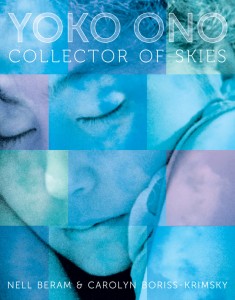
“The book’s release is timed to coincide with Ono’s 80th birthday on February 18, and provides readers snippets of info on some tumultuous periods during her lifetime.” (Amulet Books)
By Rashaad Jorden (Yamagata-ken, 2008-2010) for JQ magazine. Rashaad worked at four elementary schools and three junior high schools on JET, and taught a weekly conversion class in Haguro (his village) to adults. He completed the Tokyo Marathon in 2010, and was also a member of a taiko group in Haguro.
“Everybody knows her name, but nobody knows what she does.”
That line—uttered by the most famous of her three husbands—could accurately sum up Yoko Ono for a long time. But that shouldn’t be the case. Fortunately, thanks to a new book co-written by Nell Beram and Carolyn Boriss-Krimsky, readers have insight into this remarkable woman’s life.
Yoko Ono: Collector of Skies—so titled because Ono has always looked to the sky for inspiration—delves into the life of the famous avant-garde artist and musician, from her childhood in Japan and the U.S. to her chart-topping success in her seventies. The book’s release is timed to coincide with Ono’s 80th birthday on February 18, and provides readers snippets of info on some tumultuous periods during her lifetime.
Ono’s journey is presented in an easy-to-read format geared toward young adults. Unlike many other biographies, where all the photographs tend to be lumped together in a couple of sections, the photos in Collector of Skies are spread throughout the book, and they range from one in which Ono is wearing a kimono at the age of two to another taken at the inaugural lighting of the Imagine Peace Tower in Reykjavik in 2007. The authors also use quotes from Ono to expound upon certain periods and moments of her life.
Of course, any story about Yoko Ono has to make heavy mention of her relationship with John Lennon, and the middle of the book is largely devoted to her life with the former Beatle. While Collector of Skies might not reveal anything earth shattering for hardcore Lennon and Beatles fans, younger readers (or those unfamiliar with the Beatles) will learn not just the real story of the group’s breakup, but more importantly, the duo’s activism.
JQ Magazine: JQ&A with Bruce Feiler on ‘The Secrets of Happy Families’
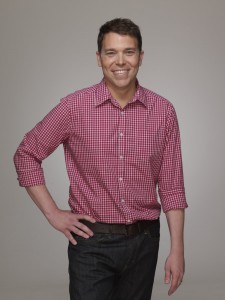
“One big idea in my book is that families should adapt all the time. The single best thing we’ve done is to add a weekly family meeting. We ask three questions, based on a popular program called ‘agile families.’ And no surprise: that idea was born in Japan in the culture of real-time change.” (Courtesy of HarperCollins Publishers)
By Sharona Moskowitz (Fukuoka-ken, 2000-01) for JQ magazine. Sharona is interested in fresh, new voices in fiction and creative nonfiction.
New York Times bestselling author and columnist Bruce Feiler (Tochigi-ken, 1987-88) has written a range of books dealing with topics as varied as life in Japan (depicted in 1991’s Learning to Bow), religion, and his own diagnosis with cancer.
His latest book, The Secrets of Happy Families, is a playbook for today’s family with tips and advice for increasing overall happiness and strengthening the family unit. Unlike other family-related books, Feiler does not advocate one particular method or philosophy over another; rather, he has done a thorough investigation of what happy families have in common and offers readers a slice of the pie.
In this exclusive interview, Feiler shares how his experience in Japan has given him insight into family life across cultures, as well as his take on the modern family’s trials and tribulations.
It seems the book market is already glutted with all sorts of self-help books about families. What sets your book apart and why do you feel that it is particularly timely?
In many ways, I was motivated by the deluge of self-help books. They’re boring, tried, and out of fresh ideas. As a parent, I was completely frustrated and had tons of questions about how to make my family function more effectively, and the only books out there were from “family experts.” Meanwhile, in every other arena of contemporary life—from Silicon Valley to elite peace negotiators, from championship sports teams to the Green Berets—there are proven new ways to make teams and groups run more smoothly. I wanted to know what those people were doing with their own families, then test their ideas with mine. Not every idea worked. That’s why I put over 200 new ones in the book, because what clicks with your family may be different from what clicked with mine. But my hope is that if you take three ideas, you’ll have a happier family in a week.
In the chapter about the agile manifesto, you talk about the importance of “being part of the family team.” In writing about the importance of teamwork within the family, were you inspired at all by your experience in Japan, a culture which valorizes the group above all else?
I think it may be more the other way around, in that I was attracted to Japan because I’ve always been interested in tight groups and well-run teams. At the time I lived in Japan, in the late 1980s, Americans still believed that the individual mattered above all else. But one thing we’ve learned from the Internet is that we all have a natural inclination toward groups, social networks, and other gatherings of people. The first generation of happiness research has shown us that relationships matter above all else. Happiness is other people. And the people who matter most to us are our family. Yet there have been almost no books that tell us how to do that.
Are there other cultural practices you observed in your time in Japan which you believe could benefit American families?
One I learned while in Japan is that being part of a group doesn’t just happen. Japanese schools, in particular, work on it. I remember a school trip I went on where classes were divided into small groups. The number one rule was, don’t be late. The number two rule was, only one person in each group was allowed to have a watch. Guess what! You better stick together. Having a close family doesn’t just happen, either—you have to work on it. Fortunately, there are lots of new ideas out there to do that, which I’ve tried to gather.
JQ Magazine: JQ&A with Takashi Ikezawa of Resobox Japanese Art Gallery
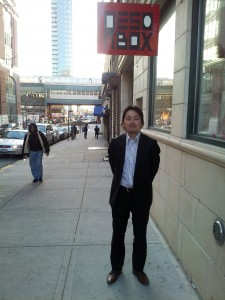
“We don’t want art to be only for wealthy people, but instead want to target as wide an audience as possible for the purpose of disseminating Japanese culture. This is actually the reason why we chose to be located in Queens, as it is said to be the most diverse part of the city.” (Stacy Smith)
By Stacy Smith (Kumamoto-ken CIR, 2000-03) for JQ magazine. Stacy is a professional Japanese writer/interpreter/translator. She starts her day by watching Fujisankei’s newscast in Japanese, and shares some of the interesting tidbits and trends together with her own observations in the periodic series WITLife.
In recent years, Long Island City has experienced a rapid gentrification, being converted from an abandoned, industrial wasteland to a hotspot of waterfront apartments and art institutions. Of course it has big hitters like the Noguchi Museum that are well known to Japanophiles, but there are also Japan-related galleries flying under the radar just waiting to be discovered. One such place is Resobox, a short walk from the Queensboro Plaza subway stop whose location is marked by only a small, overhanging sign and a signboard that sits on the sidewalk reading: “The place where people who are conversant with, dedicated to and influenced by Japanese art can gather, create innovative arts through the collaborative process and disseminate them to the world.” Interest piqued? So was mine, and I was fortunate to have the opportunity to speak with Resobox co-owner Takashi Ikezawa to learn more about this unique endeavor.
Can you share with JQ readers Resobox’s back story and the origin of your name?
Resobox was a name created from the words “resonate” and “box,” and it refers to a space where artists can meet and collaborate to create new and innovative art. It initially referred to a project begun by my partner Fumio Tashiro, a jazz musician who became interested in experimental music and music as art performance. He would collaborate with dancers, painters, and musicians to put together performances. I had a business background as I worked at a talent agency representing Japanese artists in NYC, and I knew Fumio casually. However, we started meeting up monthly to brainstorm, and our discussions always focused on the breadth and depth of Japanese culture and arts. In order for a solid collaboration to take place, you need to have a strong foundation. Since we are both Japanese, we found the culture of our native country to be a foundation substantial enough to build on. Our brainstorming sessions yielded the idea of artists, both Japanese and non-Japanese, coming to our box and resonating off each other to create new Japanese art. This is how Resobox was launched in its gallery form in June of 2011.
Can you give an example of some successful collaborations?
One of the artists who was featured until early January, Mary Burton Wheeler, became involved by taking a Japanese ink painting (sumi-e) class at Resobox. It happened to be taught by Ayakoh Furukawa, the artist we currently have on display, and collaboration began in this class environment. Wheeler learned not just about Japanese painting itself but about Japanese sense and ideas, and she incorporated this into the new pottery she produced as a result. On first glance you wouldn’t say that her work is particularly “Japanese,” but on closer look there is definitely a Japanese sensibility that she encountered via her collaboration with Ayakoh.
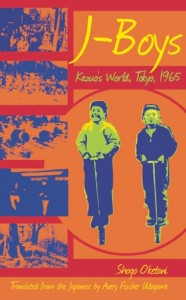
“J-Boys is a historical lesson for readers of all ages. Although the story takes place 20 years after World War II, Japan is still very much scarred by the war and Oketani mentions how it affected the mindsets of the country’s people.” (Stone Bridge Press)
By Rashaad Jorden (Yamagata-ken, 2008-2010) for JQ magazine. Rashaad worked at four elementary schools and three junior high schools on JET, and taught a weekly conversion class in Haguro (his village) to adults. He completed the Tokyo Marathon in 2010, and was also a member of a taiko group in Haguro.
The 1960s were a decade of enormous change around the world. Although Japan didn’t experience the upheaval some other countries did during that period, for one teenager, the mid-1960s were shaping up to be a different era.
Shogo Oketani’s novel J-Boys: Kazuo’s World, Tokyo, 1965 takes readers into the lives of young Kazuo Nakamoto and, to a lesser extent, his friends—younger brother Yasuo, his friend Nobuo, Nobuo’s older brother Haruo, and Kazuo’s classmate Minoru. As steeped in tradition as Japan is (and continues to be), Oketani paints a picture of a society beginning to be seriously touched by foreign influences. Inspired by the 1964 Olympics in their hometown, Kazuo and Haruo usually head to an empty lot after school to emulate 100-meter champion Bob Hayes (It was Kazuo’s dream to be an Olympic sprinter). And like many young people across the world, Haruo went crazy for a quartet from Liverpool, often singing “A Hard Day’s Night.”
Essentially, J-Boys (which was based on Oketani’s childhood)serves a journey through the ups-and-downs of adolescence while introducing younger readers to Japanese culture and the changing landscape of the country. Kazuo’s father speaks about the rise in TV’s popularity with an air of sadness, blaming it for the loss of a nearby cinema. Likewise, Kazuo feels the new Tokyo (much of it fueled by Olympic-related construction) he sees during his Saturday afternoon walks is not necessary an improved one. Kazuo develops a crush on a girl he’s known for quite a while, but sees a couple of close friends move just prior to the start of a new school year. So he realizes he’s about to embark on an unpredictable journey.
JQ Magazine: Same-sama, Party of One
By Leah Zoller (CIR Ishikawa-ken, 2009-11) for JQ magazine. Leah lives in Kanazawa, where she works as a writer and web administrator for The Art of Travel. In her spare time, she writes I’ll Make It Myself!, a blog about food culture in Japan and curates The Rice Cooker Chronicles on JETwit.com.
I live and work not too far from Omicho Market, and as a result, I see a lot of “Kanazawa’s Kitchen” and its back alleys in all seasons. I particularly like passing through in winter when the crabs are set outside the fish sellers’ stalls in the morning, the steam rising off their Styrofoam crates like a cloud in the cold air.
According to my coworkers, Omicho Market was once narrow and dirty, the way one expects a fish market to be. Since being renovated, Omicho, with its wide paths, incense to cover up the scent of fish, and ice blocks to relieve the summer heat, really fits with the tone and charm of our little city on the sea. Of course, the site is popular with tourists, but locals—myself included—actually shop there, since the variety and price of produce and seafood is often better than it is at the supermarkets. Every visit there is like a culinary adventure to me: What will be on sale today? Will the price of persimmons have dropped? What new squash varieties are the farms in the Noto growing?
Even Omicho, whose weaving roads I know like the back of my hand, has its surprises. One weekend in early winter (and winter comes early to Kanazawa), my husband and I were walking past one of the market’s side entrances when something caught my eye. I couldn’t quite process what I was seeing at first—was that a person was lying on the ground in front of one of the restaurants?
The figure on the ground was about my height, but slowly the realization that it wasn’t a person sank in. No, it wasn’t a person at all—it was a dead shark.
JQ Magazine: Book Review – ‘Samurai Awakening’

“Ultimately, Samurai Awakening is a fun read that makes you think you’re watching a movie.” (Tuttle)
By Rashaad Jorden (Yamagata-ken, 2008-2010) for JQ magazine. Rashaad worked at four elementary schools and three junior high schools on JET, and taught a weekly conversion class in Haguro (his village) to adults. He completed the Tokyo Marathon in 2010, and was also a member of a taiko group in Haguro.
For those who have lived in Japan, there were probably times when nothing seemed to be going right while struggling to get adjusted to a new culture. But eventually—or maybe miraculously—things take a 180 degree turn.
Well, that happened in Samurai Awakening, Benjamin Martin‘s work of fiction for young adults. Martin—currently a fifth year Okinawa Prefecture JET—tells the story of David Matthews, an exchange student spending the year in Japan. David is frustrated and unhappy due to the fact he can’t speak Japanese well and hasn’t made any close friends. Fittingly, very early in the story, he is bloodied in a fight with students at Nakano Junior High School.
But after attending a local temple ceremony, David learns a new god has created special powers in him. He is now able to speak Japanese fluently, fight incredibly well and turn into a cat. However, those are not the only surprises in the book. His host family the Matsumotos, who are famous sword makers, are also keeping a secret handed down to their ancestors by the Emperor of Japan. And it is with the Matsumotos that he must work to save his host sister Rie, as wolves have taken up residence in her body.
JQ Magazine: Book Reviews – ‘Belka, Why Don’t You Bark?’ and ‘The Future Is Japanese’
A pair of this year’s releases from Haikasoru.
Belka, Why Don’t You Bark?

“As a writer, Furukawa is possessed of a kinetic voice that seems to teeter on the edge of insanity. The hyperactive prose is sometimes poetic, sometimes sharp like a stinging slap in the face. Often, it’s both.” (Haikasoru)
By Sharona Moskowitz (Fukuoka-ken, 2000-01) for JQ magazine. Sharona is interested in fresh, new voices in fiction and creative nonfiction.
War: It’s a Dog’s Life. Battle Is a Bitch. War and Fleas.
These were just a few of the potential titles I had streaming through my mind as I sat down to write the review of Belka, Why Don’t you Bark?, the newly translated novel by Hideo Furukawa. But the truth is, love it or hate it (and you very well may hate it, but more on that later), Belka is far too original to be reduced to silly catchphrases or bromides.
At the very start of the novel, readers are met with a detailed canine family tree complete with the dogs’ names and nationalities. In looking back, this might as well have been a de facto warning: if anthropomorphism is not your thing, put this book down immediately.
The story begins in 1943 on the Aleutian Island of Kiska where four military dogs are left by the Japanese and then claimed by U.S. troops after the Japanese retreat. One dog dies and the other three go on to produce the offspring that populate the novel and occupy the branches of the family tree. Belka chronicles the lives of the military dogs who trace their roots back to Kiska, intertwined with the story of the young daughter of a yakuza boss who is kidnapped in the USSR and has a psychic connection to dogs. Belka is a book about history through canine eyes, namely the wars of the 20th century, as Furukawa tells us “history is moved, rolled this way and that, so simply. The twentieth century was a pawn, as were the dogs.”
JQ Magazine: Book Review – Haruki Murakami’s ‘1Q84’
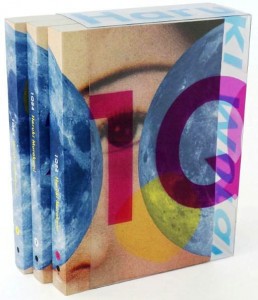
“Murakami’s previous books were like delicious sandwiches that left you wanting more. 1Q84 is like a two-foot long sub that filled you to bursting, but you’re still not totally satisfied.” (Vintage International)
Roland Kelts, don’t kick me in the balls—
One man’s attempt to review a book honestly while still keeping friends
By Rick Ambrosio (Ibaraki-ken, 2006-08) for JQ magazine. A staple of the JET Alumni Association of New York (JETAANY) community, Rick manages their Twitter page and is an up-for-anything writer.
My girlfriend wouldn’t shut up about it.
“1Q84 is the best! Ah, when it comes out in English you need to read it!” Just talking about it made her rush to find her old copies (it was broken up into three books in Japan) and start reading them again. She was enthralled, to say the least. I’ve been a Murakami fan for a while: Norwegian Wood was emotional and sexually riveting; Dance Dance Dance was creepy as hell but lots of fun; Kafka on the Shore blew my mind. So I was hungry for 1Q84.
I picked it up shortly after it came out…and put it down for a while…then picked it up again…then down… then up…I think you get the idea. My feelings can kind of be summed up like this: Murakami’s previous books were like delicious sandwiches that left you wanting more. 1Q84 is like a two-foot long sub that filled you to bursting, but you’re still not totally satisfied.
The plot follows two people tied together by fate, love, and inter-dimensional happenstance. Tengo is an author and math teacher who finds himself embroiled in a shady plot to write an award-winning book. Aomame is a fitness instructor with a decidedly darker side job. Both find themselves in an altered version of 1984 called 1Q84 that deviates from the previous reality in specific ways. Those changes seem to revolve around a cult, a beautiful young girl, a book and mysterious “Little People.” Their battle to beat the odds and find each other, discover where they are, and who’s behind the changed world is an epic journey told through alternating perspectives.
1Q84 had all the things I love about Murakami: Super complex, interesting and engaging characters, crazy inter-dimensional sex, lots of mystery, and supernatural elements that bring it right on the cusp of reality, teetering between a fantasy realm and the real 1984. His ability to walk that line (like a cat walking a picket fence for those who love cats not only in Murakami novels, but also in reviews of Murakami novels) is astounding and he does it…for a really long time.
JQ Magazine: Concert Review – ‘The Legend of Zelda: Symphony of the Goddesses’

“There was so much attention paid to the nuance, so much consideration given to the fans, that the show became a kind of homage to both the franchise’s legacy and to every avid gamer whose collective fealty raised Zelda into one of the highest echelons of video game lore.” (Preston Hatfield)
By Preston Hatfield (Yamanashi-ken, 2009-10) for JQ magazine. Preston moved from San Francisco to New York City in January 2012 and is now accepting submissions from people who want to be his friend. Abduct him from his house in the middle of the night, or find him on Facebook and ask about his JET blog in which he details his exploits and misadventures in that crazy Land of the Rising Sun we all love.
If life is one ongoing adventure and each day is its own side quest, then several days ago the already labyrinthine halls beneath Madison Square Garden were not those of a theater but a dungeon, and the spirited host of attendees was nothing short of raiders in pursuit of plunder. Their coveted treasure on this magical evening of Nov. 28 was The Legend of Zelda: Symphony of the Goddesses from Jason Michael Paul Productions. Wielding the baton like her own personal Master Sword (or, as was the case at the onset of the Wind Waker movement, an actual replica of the Wind Waker), conductor Eimear Noone led the Orchestra of St. Luke’s into an epic musical campaign that toured across Hyrule and the 16 games in Zelda’s renowned platform, which is currently celebrating 25 years since its American debut on the original 8-bit Nintendo Entertainment System.
The evening commenced with a rousing overture in the form of “The Legend of Zelda Medley” before embarking a four-part movement that began with the crowd favorite Ocarina of Time, and concluded with A Link to the Past, the game where many of the now iconic Zelda themes first premiered. Each movement in this symphonic journey—this Tour de Triforce, if you will—began at the beginning of each game and proceeded to tell the familiar tales of heroism and mystic wonder, transitioning almost fairylike from one key moment to the next, as large screens over the orchestra showed in-game footage for context and intermittently focused on soloists and the choir.
JQ Magazine: Book Review – ‘Professor Risley and the Imperial Japanese Troupe: How an American Acrobat Introduced Circus to Japan—and Japan to the West’
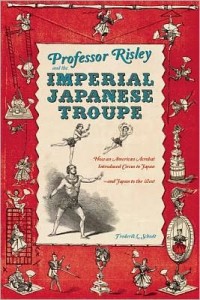
“Chock-full of illuminating illustrations and gorgeous printed ephemera that would make any contemporary typographer swoon, Professor Risley and the Imperial Japanese Troupe is a jet-set adventure in pop culture scholarship sure to appeal to anyone interested in Japan’s history on the world stage.” (Stone Bridge Press)
By Jessica Sattell (Fukuoka-ken, 2007-08) for JQ magazine. Jessica is a freelance writer, and was previously the publicist for Japan-focused publishers Stone Bridge Press and Chin Music Press. She is interested in the forgotten histories of culture, and has often considered running away and joining the circus.
We’re still riding the “Cool Japan” wave that crested at the turn of the millennium, but our fascination with the country and its culture didn’t quite stem from just anime, Harajuku fashions, or J-pop. In Professor Risley and the Imperial Japanese Troupe: How an American Acrobat Introduced Circus to Japan—and Japan to the West, award-winning author Frederik L. Schodt argues that contemporary interest in Japan’s popular culture has its roots in the travels and cross-cultural interactions of a band of 19th century Japanese circus performers and a colorful American impresario.
Published in November by Stone Bridge Press, Professor Risley explores a critical and exciting time in history, when an interest in foreign cultures was rapidly expanding beyond the privileged parlors of the upper class and Americans and Europeans were greatly fascinated by anything Japanese. Schodt offers an intriguing case study of both early Japanese conceptions of the West and the West’s first looks at modern Japan, but it is also a mystery of sorts: Why did a group of acrobats that were incredibly popular with international audiences in the 1860s fade from the annals of performing arts history? How was the life of “Professor” Richard Risley Carlisle, arguably one of the most extraordinarily talented and well-traveled performing artists in history, buried in the folds of time? Schodt suggests that we may never know the answers, but we can sit back and enjoy the show as their histories unfold.
This story begins, fittingly, with the question, “Where Is Risley?” Schodt artfully traces “Professor” Risley’s early travels and performance history like an elusive game of connect-the-dots, piecing together itineraries, publicity notices and press clippings until a clear pattern of a fascinating life emerges. Risley seemed to be everywhere and nowhere, and led a full life of jet-setting and adventure-seeking at a time where transcontinental travel was only beginning to open up to those outside of the diplomatic realm. We follow him on a decades-long journey across the United States, Europe, Australia, New Zealand, Southeast Asia, China…and finally to Japan.
Risley arrived in Yokohama in early 1864 and immediately went to work setting up a fantastic Western-style circus to delight foreign residents and Japanese locals alike. As the country had re-opened to the world just five years earlier, it was a risky time to be in Japan, and non-Japanese residents lived with underlying worries of Shogunate-dictated expulsion and violence from disgruntled ronin. That didn’t quite stop Risley’s entrepreneurial spirit, but he did eventually run into a series of difficulties with his shows—and a stint in dairy farming, which, in the process, led him to introduce ice cream to Japan. He hadn’t originally intended to stay in Japan for long, but most likely due to the Civil War raging back home in America, he bided his time and explored his options. Thankfully, his stay there—paired with an almost desperate talent for improvisation—would lead to the world’s first taste of Japanese popular culture.
JQ Magazine: JQ&A with Matthew Gillam, Senior Researcher at the Japan Local Government Center

“When you come back from Japan, people say, ‘You know Japanese, you’ve been abroad, you should be able to get a job anywhere.’ You soon realize that it doesn’t work that way. Alumni coming back should look at things you did in different light: what did you fundamentally do, and take away from that?”
By Adam Lobel (Nagano-ken, 2000-02) for JQ magazine. Last year, Adam returned to New York after 10 years in Japan, where he researched satoyama (traditional landscape of Japan) as a master’s student, and collaborated with Japanese policymakers in science and technology while working at a think tank. Adam currently helps manage his family’s business, a land use law firm in Manhattan, and looks forward to contributing to New York’s green building movement.
Born and raised in Marshalltown, Iowa, Matthew Gillam was hooked on Japan after visiting when he was 17. After college, he lived in Japan for eight years, and then returned to the U.S., where he completed a master’s at Columbia’s School of International and Public Affairs (SIPA). Matt has spent the past 14 years as a researcher at the Japan Local Government Center (JLGC), discovering and sharing best practices from local governments in North America with his colleagues in New York and Japan.
By encouraging organizational discipline and providing tools to build strong networks, Matt has helped strengthen the JET Alumni Association, thus helping thousands of JET participants smoothly transition to life back home. He promotes JETAA’s role an important stakeholder in productive business and cultural relationships with Japanese localities, helping broaden the JET Program’s mission long after participants return home.
In this thought-provoking interview, JQ spoke with Gillam about what it was like to study Japanese at the University of Iowa in the 1980s, life in Japan before the existence of JET, and the kindness and hard work JET families displayed in the aftermath of 3/11. He emphasizes that JET—an experiment in grassroots internationalization—has changed how the world thinks about Japan. Matt gave this interview before heading to Japan, where he spent four days with It’s Not Just Mud (INJM), a non-profit volunteer organization based in Ishinomaki.
How did you become interested in Japan?
I was exposed to Japan when I was seven: my sister spent the summer of 1969 as an exchange student in Yamanashi. She fell in love with Japan, and told us about it after returning home. Eventually she went to live in Japan, teaching English at Sony Language Labs. In 1979, just before my senior year of high school, my mother and I went to visit. Before that trip, I never liked to travel. Suddenly, I was in a completely new place. I realized there was a bigger world, and it was interesting. That’s when I fell in love with Japan, its people, food, art and architecture.
After my sister returned to the U.S., she placed a Japanese student in a nearby town. I fell in love with that student, who eventually became my wife. In college I flunked out of forestry, my first major and, looking for something new, got into Japanese language. I did a year abroad at Kansai Gaidai in Osaka, and spent eight more years in Japan after graduating.
How did people react to your decision to study Japanese? What was Japanese study like at the University of Iowa in the 1980s?
Some people did not understand my decision to study Japanese, especially because it was a small Midwestern town. Their reaction was, “Why Japanese?” This was 1982: Japan was just beginning to emerge as a major economic rival, and Japanese culture hadn’t permeated the Midwest yet. It was a strange thing to do.
My sister understood, and my mom understood, but other family members and friends did not. In those days, some people’s reaction to Japan was still influenced by the Second World War: “These people were enemies; I am not comfortable with them.” That only got worse through the eighties with trade friction.
Study materials were primitive by today’s standards: Japanese textbooks by Prof. Eleanor Jorden, a kanji dictionary, and language lab with cassette tapes. Our professor, Thomas Rohlich (now at Smith College) started the same day I did. We had a Japanese teaching assistant from Tokyo, but most of the teachers were white men.
There were no Japanese restaurants or pop culture. Fisher Control, a company in my hometown, employed a Japanese engineer, who had relocated with his wife. At the beginning of my first year of college, there were 30 students, the biggest class they had ever had! That number slowly decreased, until there were only six or eight students by my third year. There were a couple of Japanese students on campus who became casual friends. Prof. Rohlich’s wife was from Kyoto, and she hosted a gyoza party. That was about it.

Maynard Plant, second from left: “I really do think it is important to learn more than one language. Not only for the obvious convenience of communication, but for the enrichment of understanding of other cultures as well. Language really is the only gateway into understanding another person’s psyche and culture.” (Courtesy of Edward Entertainment Group)
By Preston Hatfield (Yamanashi-ken, 2009-10) for JQ magazine. Preston moved from San Francisco to New York City in January 2012 and is now accepting submissions from people who want to be his friend. Abduct him from his house in the middle of the night, or find him on Facebook and ask about his JET blog in which he details his exploits and misadventures in that crazy Land of the Rising Sun we all love.
Multinational pop rockers Monkey Majik are teaming up with shamisen heroes the Yoshida Brothers, the duo known for their traditional sound and pluck, for a three-date North American tour that kicks off Nov. 14 at Manhattan’s Marlin Room at Webster Hall, followed by the Mod Club in Toronto Nov. 18 and the National Arts Centre in Ottawa Nov. 20.
Monkey Majik was founded by Maynard Plant (Aomori-ken, 1997-2000), a native of Ottawa, Canada, while he was teaching English in Sendai on the JET Program. Known for a having a fun and versatile style of music, the band first earned mainstream attention in 2006 for their singles “Fly” and “Around the World,” and have since collaborated with other Japanese groups like SEAMO, m-flo, Bennie K, and the Yoshida Brothers.
In this exclusive JQ interview, the versatile vocalist and guitarist discusses the band’s origins, his own relationship with music, and his sense of home and community in Sendai, which is still recovering from the devastation caused by the 3/11 earthquake and tsunami.
Which came first: the love of music or Japanese culture, and how has the one influenced and supported the other since you came to Japan?
I probably first took interest in Japan when I was about 10 years old or so when I visited Expo 86 in Vancouver, Canada. My interest in music also started at an early age. Most of my family is musical, so it always came natural. Certainly since arriving in Japan about 15 years ago, my musical interests have changed. The Japanese music scene is incredibly diverse and different from the Western scene. The sound is very unique and [it] has had a deep effect on our music.
It’s funny, many ALTs in Japan feel like rock stars, but you actually became a rock star. What was it like going from small time notoriety and fame at your school, to becoming famous on a national level for your musicianship?
It didn’t happen overnight, so I suppose I never took notice. It’s a lot like learning Japanese—you don’t just wake up fluent one day. Success is born out of hard work and commitment. Regardless of where you live, the same elements come into play.
How did the current band members come together? Were you friends before you started collaborating professionally? How have each of you influenced Monkey Majik’s sound, style, and group dynamic?
I put the current band together after most of the original members quit in 2000. I first called my younger brother Blaise, and within a couple of months we found Tax (Kikuchi Takuya). It was around 2005 that our original bassist Misao Urushizaka quit. We then recruited Dick (Hideki Mori). It’s difficult to say if the friendship came before membership, but one thing is certain now: we wouldn’t be doing this if we hadn’t become best friends. We have a lot of respect for each other and all [band] decisions are made together.
JQ Magazine: 2012 JETAA National Conference in San Francisco Recap
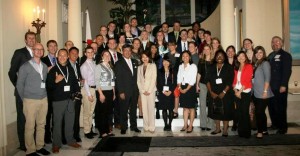
JETAA USA delegates at the residence of Ambassador Hiroshi Inomata, Consul General of Japan in San Francisco, Oct. 26, 2012.
By Pam Kavalam (Shiga-ken, 2007-09) for JQ magazine. Pam is Secretary of the JET Alumni Association of New York (JETAANY) and a participant at this year’s National Conference.
Thursday, Oct. 25
Hosted by the JETAA Northern California (JETAANC) chapter, the conference kicked off with a “reception” at Off the Grid, a collection of gourmet food trucks inspired by Asian night markets and conceived and run by JET alum Matt Cohen (Saga-ken, 2001-04).
Friday, Oct. 26
The delegates from 18 of the 19 JETAA USA chapters received a welcome from JETAANC President John Dzida, Consul General of Japan in San Francisco Hiroshi Inomata, and Takaaki Ogata from CLAIR New York. Noriko Watanabe from the Embassy of Japan in Washington, D.C. gave a touching personal farewell from Ambassador Ichiro Fujisaki, who attended the past two JETAA National Conferences and will be leaving his post this year. Workshops topics included sister city-JETAA cooperation; databases and approaches for chapter membership management; and the utilization of Google apps and websites to publicize programs. There was also an update on the National 3/11 Relief Fund, which raised nearly $90,000 from all 19 chapters for Tohoku recovery efforts. The evening ended with a reception at the Consul General’s Residence and continued networking at Local Edition in the Financial District.
Saturday, Oct. 27
The Country Representatives discussed their visions for JETAA in the coming year and introduced the newly formed JETAA USA Advisory Board, which consists of four seasoned JET alums who will provide guidance to all national and regional leadership. It includes James Gannon (Ehime-ken, 1992-94) and Steven Horowitz (Aichi-ken, 1992-94) of JETAANY; Ryan Hart (Chiba-ken, 1998-99) of Pacific Northwest JETAA; and Jessyca Livingston (Hokkaido, 2003-06) of Rocky Mountain JETAA. Other workshops discussed organizing chapter finances; a JETAANC-run high school scholarship program; facilitating cultural exchange through continuing Japanese traditions such as kabuki; and a panel with members of the Northern California community, including JET alums Ken Wakamatsu (Hiroshima-ken, 1996-1998) at Salesforce and Ryan Kimura (Shizuoka-ken, 2004-06) of JCCC Northern California (and the owner of a purikura shop in San Francisco’s Japantown!). The panel discussed how JETAA chapters can form relationships and collaborate with community groups to engage members. The delegates finished the night with a CLAIR reception at Yoshi’s San Francisco and a cable car sightseeing tour.
JQ Magazine: Theatre Review – ‘Hold These Truths’
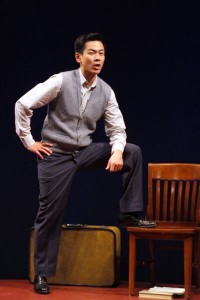
“This amazing life story spanning six decades manages to be compressed by playwright Jeanne Sakata into a dense 90-minute performance that both educates and entertains.” (Photo of Joel de la Fuente by Steven Boling)
A nail that stuck out but resisted being hammered down
By Stacy Smith (Kumamoto-ken CIR, 2000-03) for JQ magazine. Stacy is a professional writer/interpreter/translator. She starts her day by watching Fujisankei’s newscast in Japanese, and shares some of the interesting tidbits and trends together with her own observation in the periodic series WITLife.
The intimacy of a stage surrounded by several rows of semicircle seating at the 14th Street Y is the perfect venue for the new play Hold These Truths. This work depicts the life of Nisei (second generation) Japanese American Gordon Hirabayashi, who took it upon himself to defy Executive Order 9066, which led to the imprisonment of Japanese Americans and their families in internment camps during World War II. It is a one-man show starring Joel de la Fuente, who spellbinds the audience with his ease in slipping back and forth between Hirabayashi and the other characters he portrays. The viewer’s proximity to the performer heightens the emotional depths of Hirabayashi’s often troubling, often inspiring tale of belonging and identity.
The play begins by highlighting the Japanese phrase “deru kugi wa utareru,” or “the nail that sticks up gets hammered down,” which Hirabayashi’s parents instill in him when he is young. He internalizes this belief, but at the same time he is aware of actions that seem to go against it, such as his mom taking a case to court when her land rights are violated. He describes a peaceful childhood in Seattle where he plays with other Japanese American friends and attends picnics where their mothers bring food like “onigiri, chicken teriyaki and banana cream pie.” Raised as a Christian, Hirayabashi becomes a religious pacifist when he enters the University of Washington.
Here he stays in an international dorm and meets his first non-Japanese friends, such as his roommate and close friend Howie and his future wife Esther. He becomes involved with the YMCA as campus vice president and tries to get a job with them at the front desk, but ironically is turned down because of his race. When an 8 p.m. curfew is later put in place for the Japanese, Hirabayashi initially complies but then runs back to join his friends studying in the library. This small act of bravery is emblematic of the much bolder resistance that Hirabayashi will show going forward.

